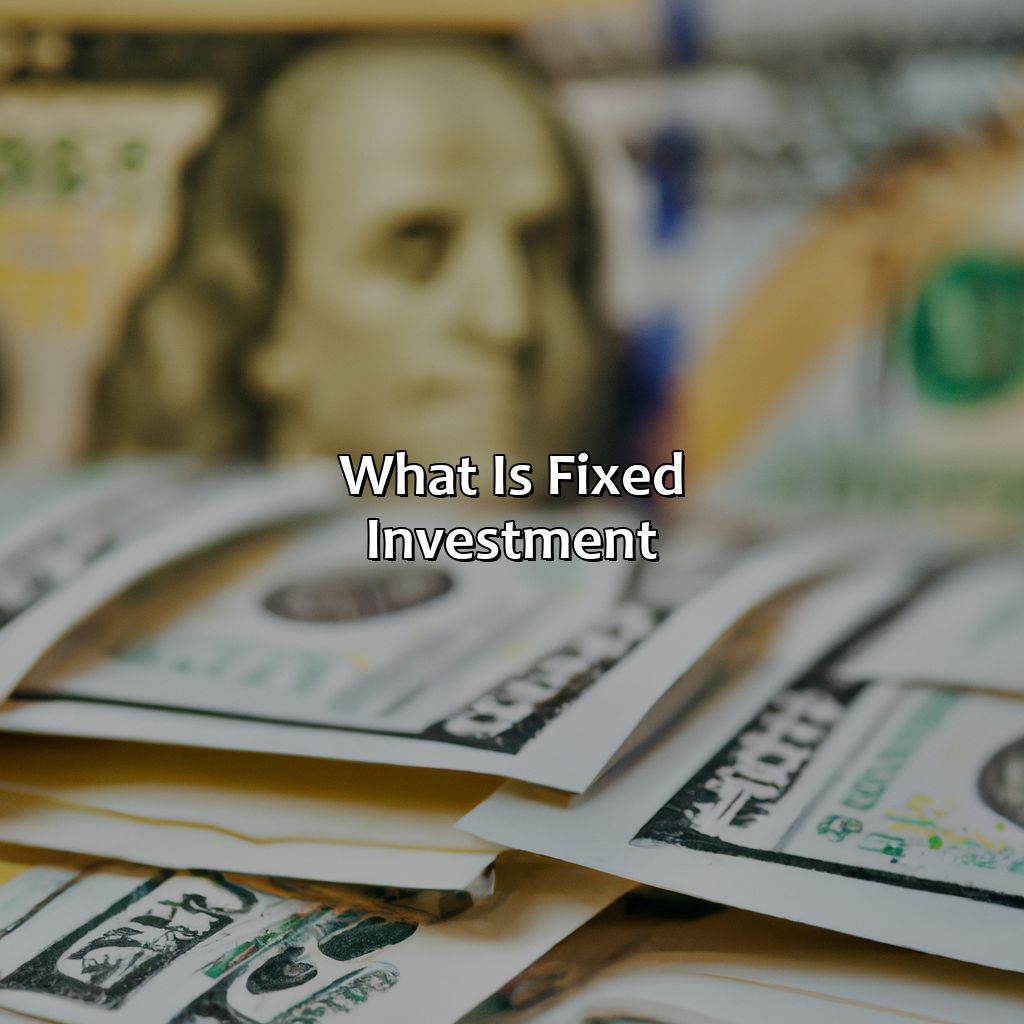What Is Fixed Investment?
Key Takeaway:
- Fixed investment refers to the long-term investment in physical and intangible assets, including residential and non-residential structures. It plays a crucial role in the growth and development of an economy.
- There are various types of fixed investment, such as physical assets like machinery and equipment, intangible assets like patents and trademarks, and residential and non-residential structures like housing and commercial buildings.
- The importance of fixed investment lies in its ability to boost economic growth, increase job opportunities, and improve infrastructure. It also contributes to technological progress and innovation.
- Factors that affect fixed investment include interest rates, government policies, and business confidence. Higher interest rates and unfavorable government policies can discourage investment, while business confidence can encourage it.
Are you looking for ways to invest and grow your wealth? Fixed investment offers a secure, profitable, and straightforward approach. You will learn how to navigate this investment option to maximize returns.
Definition of Fixed Investment
Fixed Investment: Understanding the Concept
Fixed Investment is an essential business activity that refers to the purchase of long-term assets like machinery, equipment, buildings, and vehicles that are used in the production of goods or services. It involves substantial investment that is expected to generate long-term benefits for the business. Fixed Investment can also be considered as capital expenditure that is meant to expand the productive capacity of the business.
Fixed Investment is a critical decision for businesses as it requires a considerable amount of funds, and the assets purchased may require long-term financing. The primary objective of Fixed Investment is to create durable assets that can generate future cash flows for the business. Businesses must carefully evaluate the investment opportunity by considering factors like expected returns, technological advancements, and the competitive environment.
Unique details to be considered while making Fixed Investment decisions include assessing the capacity utilization ratio of existing assets, the cost of capital, market demand, and the expected lifespan of the new assets. It is essential to consider both qualitative and quantitative factors while making investment decisions.
Fixed Investment has a significant impact on the overall economic growth of the country, as it leads to the creation of job opportunities, increased productivity, and higher incomes. However, it is crucial to ensure that Fixed Investment is made in the right assets and at the right time to maximize the benefits.
In the past, Fixed Investment was considered a luxury for businesses that had high profitability and strong cash reserves. However, with the availability of low-cost financing options and government incentives, Fixed Investment has become more accessible to startups and small businesses, leading to increased competition and technological advancement.
Fixed Investment plays a pivotal role in the growth and development of businesses. By understanding the concept and making informed investment decisions, businesses can create a sustainable competitive advantage and achieve long-term success.
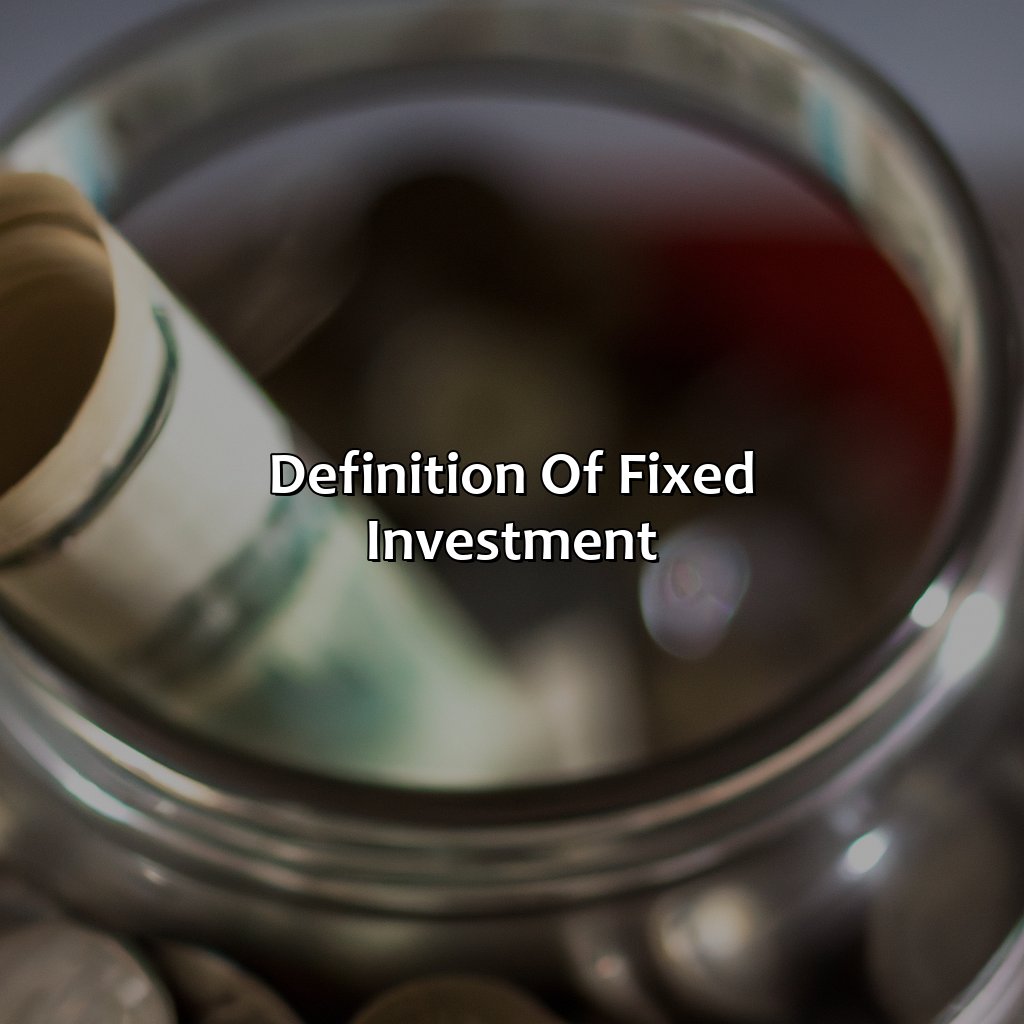
Image credits: retiregenz.com by Harry Woodhock
Types of Fixed Investment
To tell the difference between different types of fixed investment, check out the “Types of Fixed Investment” section in “What is Fixed Investment?”. It has subsections like “Physical Assets”, “Intangible Assets”, and “Residential and Non-Residential Structures”. Understanding each one can help you figure out which option is best for your investment goals.
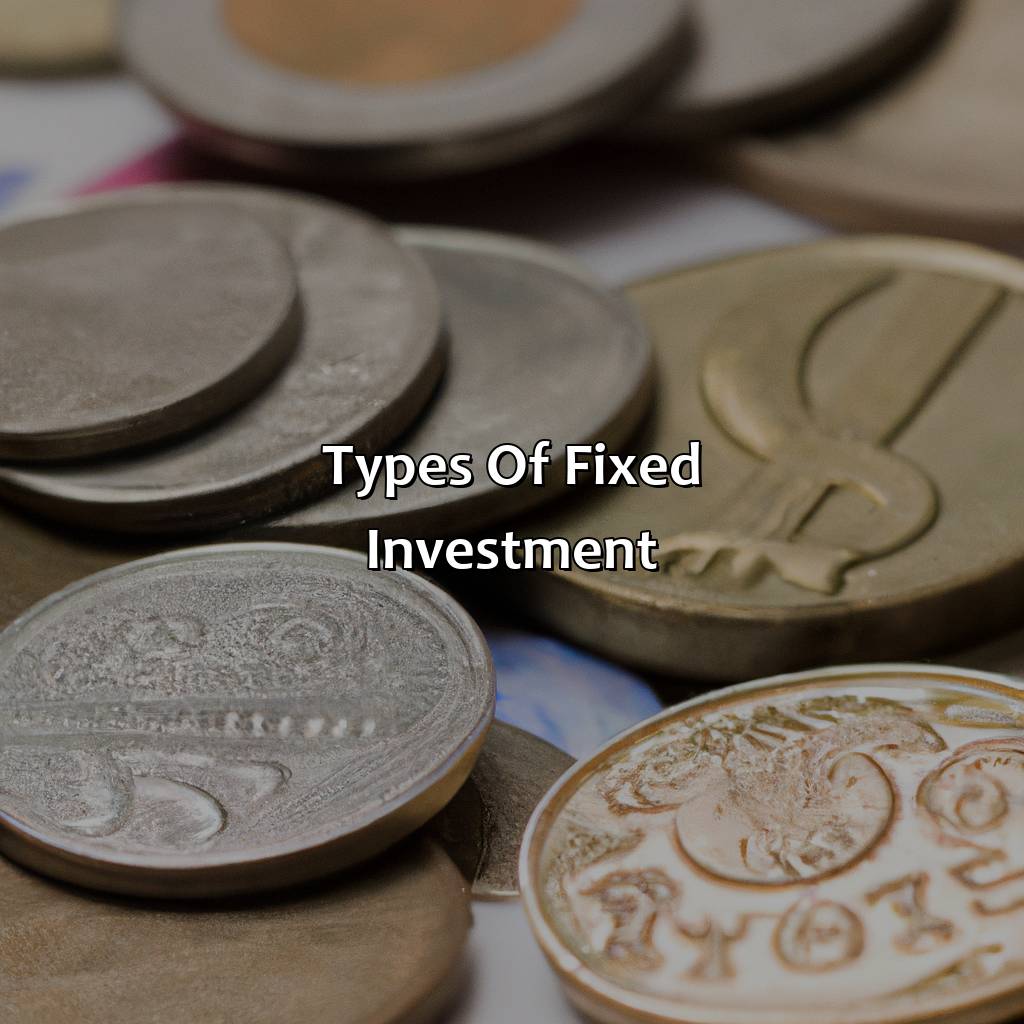
Image credits: retiregenz.com by David Duncun
Physical Assets
Assets that have a physical existence can be referred to as tangible property. These types of investments are known to offer long-term value and may include land, buildings, machinery, equipment and other forms of property. Such assets require substantial amounts of capital to acquire and sustain, but they have reliable valuations and can generate earnings through rent or sale.
The following table showcases various types of physical assets:
| Examples | |
|---|---|
| Land | Farming lands, industrial lots |
| Buildings | Warehouses, offices |
| Machinery | Vehicles, production lines |
| Equipment | Tools, furniture |
It is crucial for companies and individuals to invest in the right type of physical assets that suit their long-term financial goals. Assessing each asset’s criteria before investing can help identify how well it will meet objectives such as profit gains or utilisation rates.
PwC reports that Infrastructure & Mining scored the highest deal value out of all sectors at $77.5 billion globally during H1 2021.
Getting excited about intangible assets is like getting excited about a pen with no ink – it looks cool, but it’s pretty useless.
Intangible Assets
Investments made in assets that cannot be physically touched or measured are referred to as non-physical assets. These could include intellectual property rights, patents, software, trademarks, and copyrights. Intangible assets represent the value of a company’s brand image and its ability to generate future cash flows. Businesses with recognizable and protected brands often have higher valuations compared to those without any identifiable intangible assets.
Intangible assets also include investments in human capital, such as employee training programs or leadership development initiatives. These types of investments can enhance an organization’s productivity and innovation capabilities. By investing in their workforce, companies can better utilize their employees’ knowledge and skills, resulting in a competitive advantage.
Moreover, intangible investments are subject to unique accounting treatment compared to physical assets. For instance, they are typically recognized on a balance sheet at cost (including acquisition costs) rather than fair value.
Pro Tip: Investing in intangible assets requires careful consideration and strategic planning to ensure maximum returns on investment over the long term.
Investing in real estate is like building a house of cards, except you’re hoping it doesn’t come crashing down.
Residential and Non-Residential Structures
Residential and non-residential structures refer to different types of fixed investments in the construction industry. Residential structures encompass houses, apartments, and other buildings where people live. On the other hand, non-residential structures include commercial buildings, warehouses, factories, and other industrial buildings.
Below is a table that highlights some unique aspects of residential and non-residential structures.
| Residential Structures | Non-Residential Structures |
|---|---|
| Generally smaller in size compared to non-residential | Typically larger in size than residential |
| More customization options for homeowners | More standardized designs for businesses |
| Longer construction times due to more customization | Shorter construction times due to standardized designs |
| Primarily financed by individual borrowers | Funded by investors or corporations |
In addition to the above information, it’s worth noting that residential structures require adherence to more government regulations since they serve as homes for citizens. Non-residential structures need fewer regulations but must follow strict safety guidelines.
For individuals seeking to invest in either type of structure, it’s important to conduct thorough research on the current real estate market trends and seek advice from experts in the field. Moreover, before making an investment decision, potential investors should consider their budget constraints and long-term goals for any potential returns on investment.
Investing in the future is like buying a cake – you need to put in the effort and wait for the delicious payoff.
Importance of Fixed Investment
Fixed investments can benefit the economy, job market, and infrastructure. They can boost growth, increase job chances, and improve infrastructure.
All these topics will be covered in this section.
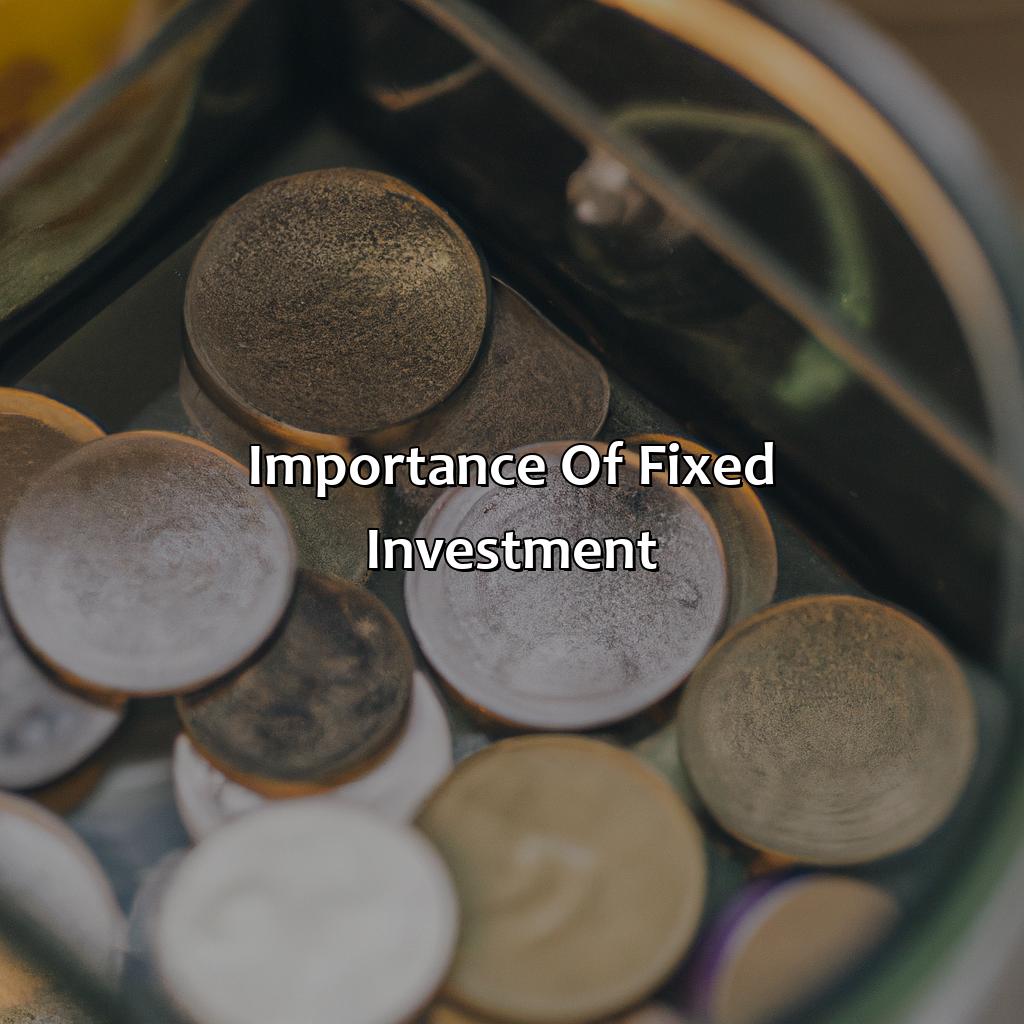
Image credits: retiregenz.com by James Jones
Boost to Economic Growth
Investing in the fixed assets of a country creates and multiplies its economic growth. This growth is because of an array of factors, such as having continuous employment, essential research and development, and expansion of businesses. When businesses invest in their properties or infrastructures to accomplish long-term objectives, this is called fixed investment. Fixed investments play a pivotal role in boosting economic growth by providing jobs, increasing production rates, and generating new means for purchases or innovations.
For instance, countries that have invested heavily in physical infrastructure like roads, bridges, railways have reaped more benefits than those who did not. In turn, this created new opportunities for other related industries to flourish whilst lowering the cost of transportation on goods from one end to another.
Fixed investments are crucial business or capital expenditures undertaken for various reasons such as research & development or acquisitions through advanced tools & tech. Institutions often calculate their most dominant investing opportunities based on liquidity preference theory. Optimizing fixed investments also requires aligning goals with return levels which allow investors to achieve both short and long term productivity within specific time frames.
Industries such as manufacturing have plants equipped to deal with volume capacities capable of significant output ratios much higher than small-scale establishments can manage – which yields higher rates of job creation over time. Therefore it is safe to say that a healthy economy relies on the accumulation of non- depreciative productive assets fueled by fixed investment.
A true story about Ms.Patel might help us understand why investing wisely yield better results over time – Ms.Patel’s father bought her a home 25 years ago at $200k; she was hesitant to move away from her current city until recently when she sold the property for $3million allowing her reinvest funds elsewhere now that she’s retired comfortably. Ms.Patel’s father’s decision was made after careful consideration towards future circumstances and market trends ultimately led them down the path of wise investment yielding incredibly high returns over decades without selling off throughout the rising property markets.
Fixing your investments may lead to more job opportunities, but it won’t fix your ex’s commitment issues.
Increase in Job Opportunities
The significance of Fixed Investment fosters economic growth and backs employment opportunities. With more capital investment, businesses can increase their production capabilities, which will require an increase in the workforce to cater to the heightened demand for goods and services. Consequently, more jobs are created in various sectors. This mirrors the optimistic chain reaction between fixed investment and job creation.
Further, research indicates that job openings in high-tech and industrial sectors related to fixed investment tend to provide higher wages than other industries. This is because these jobs often require specialized skills and additional training, which guarantees better paychecks for employees. Besides providing job opportunities, fixed investments directly contribute to the GDP and facilitate advances in technology that can be applied across sectors.
Moreover, as companies strive towards increasing production efficiency through innovation in machinery or equipment, they also open doors for employment possibilities that support these new investments. The effect noticed with fixed expansion projects is one of the largest non-government fuel sources on job opportunities worldwide while bolstering sustainable economic growth.
A testimony to this lies in Franklin D. Roosevelt’s New Deal during the great depression where his administration created several fixed investment projects like public infrastructures to curb unemployment rates while fostering economic growth simultaneously.
Improvement in infrastructure? More like improvement in my commute time from tolerable to slightly less insufferable.
Improvement in Infrastructure
The development of basic infrastructure is crucial for stable economies and sustainable growth. One aspect of infrastructure that anchors the economy and promotes fixed investment is transportation.
Roads, bridges, and ports establish a foundation for trade networks, connecting consumers to sellers throughout regions and countries. Investors are more likely to invest in a country that has secure and up-to-date infrastructure, indicating potential for future prosperity.
In addition to transportation, infrastructure such as energy grids, telecommunication systems, clean water supplies, hospitals and schools promote stability within societies while sustaining economic growth for years to come.
A notable example is the construction of the Hoover Dam during the Great Depression in 1931. It provided jobs for thousands during dire times when unemployment was at an all-time high. Today it continues to provide water storage in drought-stricken regions of Nevada, Arizona and California – a testament to the sustained advantage of strategic fixed investments.
Planning to invest in fixed assets? Just make sure your crystal ball is as reliable as your financial projections.
Factors Affecting Fixed Investment
Dive into the Factors Affecting Fixed Investment section! Focus on Interest Rates, Government Policies, and Business Confidence. Learn the benefits and drawbacks of each. Gain a comprehensive understanding of fixed investment’s bigger picture.
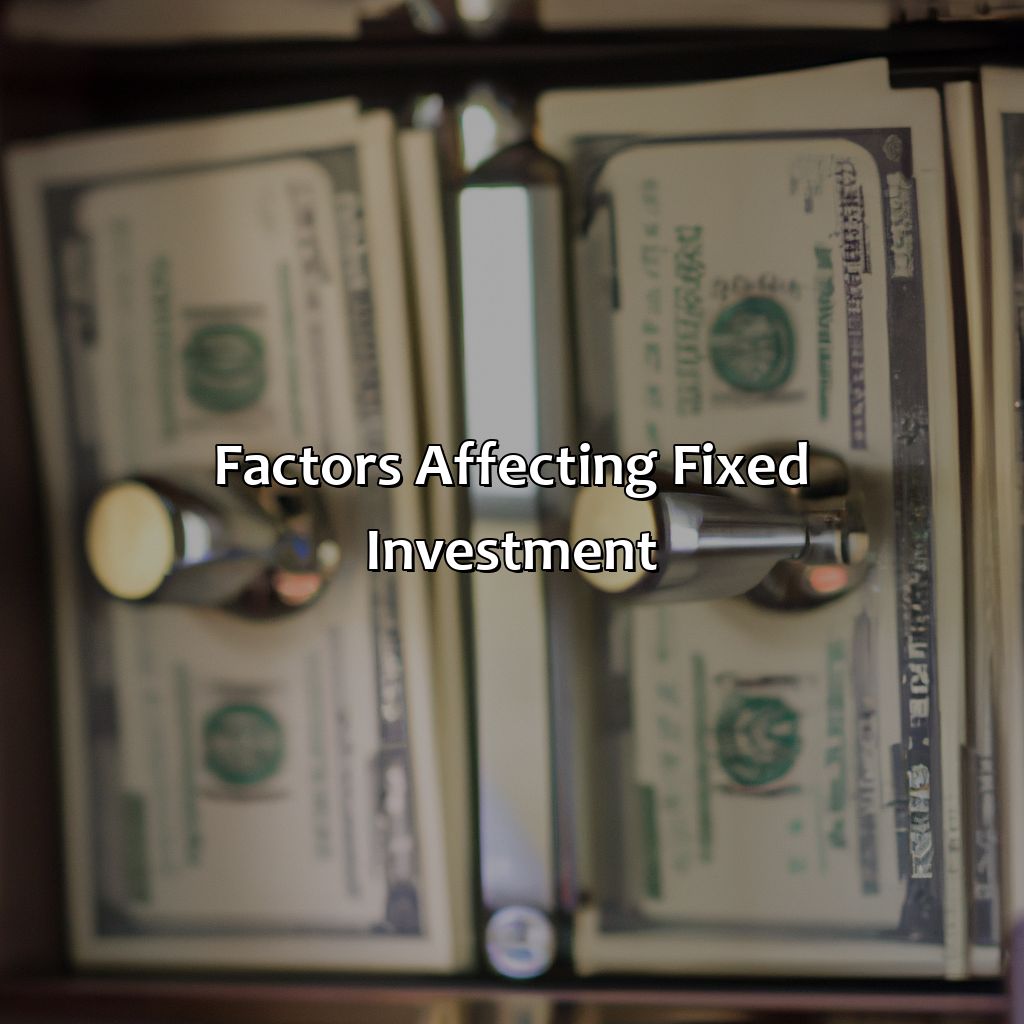
Image credits: retiregenz.com by James Woodhock
Interest rates
In the realm of fixed investments, the fluctuation of interest rates is crucial. Interest rates affect the cost of borrowing and the return on savings, hence they can greatly impact fixed investment decisions.
When interest rates rise, borrowing costs increase which may deter investors from taking the risk. Conversely, a dip in interest rates may encourage investment as borrowing becomes cheaper. A country’s central bank plays a key role in influencing macroeconomic policies that affect interest rates.
Apart from macroeconomic factors, political instability also plays a significant role in shaping investment decisions. Political turmoil often leads to market volatility and investors tend to avoid such circumstances due to perceived risks.
Additionally, investors seek assurance and credibility while making investments; both these factors can be heavily influenced by economic indicators such as inflation rate and GDP growth rate.
In China, where fixed asset investment has been on an upward trend for years, real estate is considered a sensible option for investors due to its low risk and high returns. The market demand had become so rampant, however now fixed assets’ growth has stagnated due to policy interventions such as increasing loan costs and deposit reserve requirements for banks.
Government policies are like the ultimate game of Jenga, pull one block out and watch the whole economy come crashing down.
Government Policies
The regulatory measures and strategies enforced by the government significantly impact fixed investment in a country. Fiscal and monetary policies, tax laws, trade agreements and subsidies offered by the administration can stimulate or burden investments in certain sectors. These interventions can provide incentives for new investments or help existing ones to flourish, thus increasing the overall output of the economy.
When the government provides tax exemptions or reduces tariffs on imported machinery, it encourages investors to expand their operations. Privatization of state-owned enterprises also creates opportunities for private investments. Similarly, fiscal policies like lower interest rates, increased public spending on infrastructure development and financial incentives for small businesses attract more investments to these areas.
On the other hand, strict regulations or unfavorable taxation systems may discourage investors from investing in certain sectors such as manufacturing industries. Political instability, corruption and lack of transparency are other factors that create doubts among investors about their safety of investment.
It is crucial for governments to maintain political stability, provide a transparent regulatory environment and offer progressive policies that promote long-term growth. A successful example is Taiwan. After shifting from an agricultural-based economy to an industrial one, which was initially started with foreign countries’ technical assists like Japan’s aid policy, Taiwan continued encouraging post-WWII democratic liberalization policy with economic adjustment policies introduced around 1979-82 led by the Minister of Economic Affairs (MOEA). Nowadays Taiwan’s diversified domestic economy remains stable even facing global recession crisis and competing economic structure against China mainland because they established nation branding through research-oriented industries boosted by education Systemic efficiency evaluation repeatedly evaluated annually, creating high-tech clusters that could undergo R&D innovations as well as apply them into viable corporations. Therefore ensuring stable government policies remain crucial factors affecting fixed investment as long as reforms are encouraged coupled with dynamic intelligence community trends compared with rivals domestically and globally beyond emerging countries status quo allured into becoming innovation-led wealthy society sustainably excepting threshold external risks unpredicted so far such as natural disasters or pandemics.
Business confidence is like a rollercoaster – one minute you’re up, the next minute you’re upside down and screaming for dear life.
Business Confidence
Confidence in the economy influences fixed investment decisions. When businesses are optimistic about the future, they tend to increase investment in machinery, infrastructure and other assets. This boost in confidence can lead to increased consumer spending and economic growth. On the flip side, when business confidence is low due to uncertain economic conditions or political instability, firms may delay investment decisions. This can lead to stagnation or contraction in the economy.
It’s important to note that business confidence is not solely dependent on actual economic conditions but also on perception and expectations. Factors such as government policies, global events and technological changes can impact perceptions and create uncertainty.
Pro Tip: Keep an eye on varying factors impacting business confidence, including policy changes, trade tensions and emerging markets. Stay informed and reassess your investment strategy accordingly.
Five Facts About Fixed Investment:
- ✅ Fixed investment refers to investment in physical assets such as buildings, machinery, and equipment. (Source: Investopedia)
- ✅ Fixed investment is essential for long-term economic growth and job creation. (Source: World Bank)
- ✅ Fixed investment is often funded through borrowing, and can represent a significant portion of a country’s GDP. (Source: OECD)
- ✅ Fixed investment is different from financial investment, which involves investment in stocks, bonds, and other financial assets. (Source: The Balance)
- ✅ Government policies and incentives can influence the level and allocation of fixed investment in an economy. (Source: IMF)
FAQs about What Is Fixed Investment?
What is fixed investment?
Fixed investment refers to a long-term investment made by individuals or businesses in physical assets such as buildings, machinery, and other equipment. The aim of fixed investment is to increase productivity and ultimately generate profits.
What are the benefits of fixed investment?
Fixed investment provides several benefits, including a boost to productivity, generating income, creating employment opportunities, and increasing the overall value of the economy.
Why is fixed investment important?
Fixed investment is crucial to create a stable and growing economy. It helps businesses to grow and expand, which results in greater employment opportunities and an increase in the overall standard of living.
What is the difference between fixed investment and floating investment?
The key difference between fixed and floating investment is that fixed investment entails investing capital in long-term physical assets, while floating investment refers to short-term investments such as stocks, bonds, and currencies.
What are some examples of fixed investment?
Examples of fixed investment include purchasing property, machinery, equipment, and infrastructure. These assets are expected to generate income and provide long-term value for the investor.
What are the risks of fixed investment?
The primary risk of fixed investment is the potential for assets to lose value over time. This can occur due to changes in the market, changes in technology, or other factors that affect the asset’s value. Additionally, the cost of maintaining and repairing fixed assets can also be a significant risk for investors.
